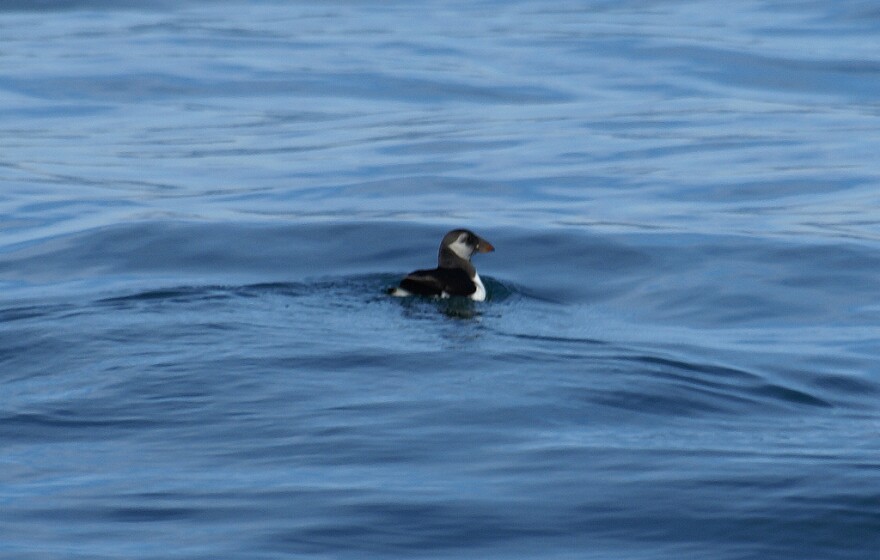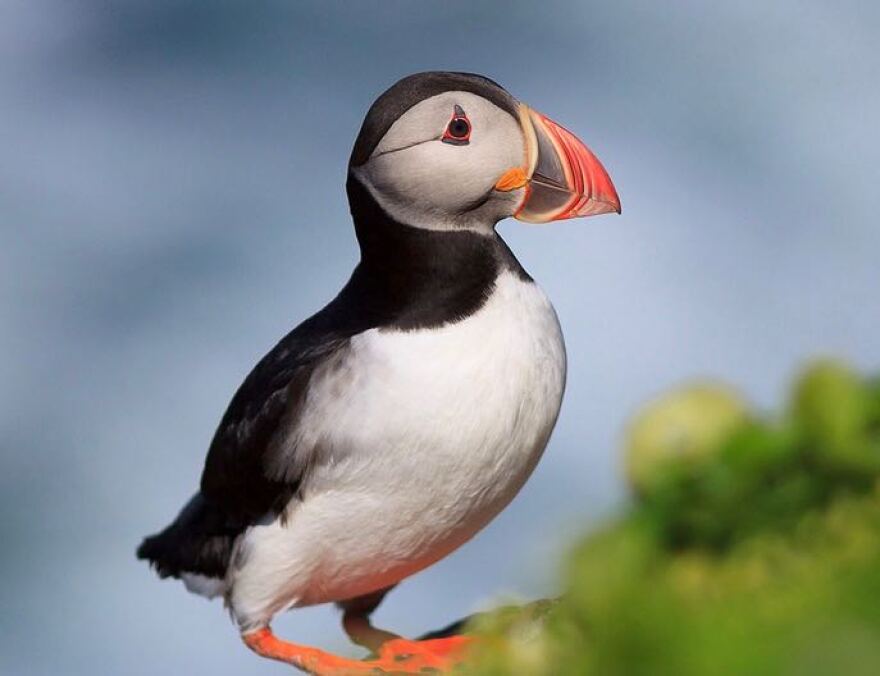Back in November, I pronounced somewhat prematurely that the season of alcids was upon us. But, as is often the case, the flight didn’t really get going until January this year. So if you haven’t yet mounted a search for your first puffin or Dovekie, you’re in luck, because things are just starting to heat up up now.
To refresh your memory, alcids are those tuxedoed seabirds of the north that fly down each winter in unpredictable numbers. They include murres, razorbills, and guillemots, and of course puffins. They mostly winter well offshore, where they dive for small fish and zooplankton, and are always a treat to see from shore. Here on the Cape we are lucky to be one of the best places in the world to see alcids from shore, and there has been a bit of a bonanza in recent weeks.

At Race Point in Provincetown, folks who make the long walk out to the rip currents near the lighthouse have been treated to a nice showing of all six of our regularly occurring alcid species, including a couple of puffins paddling around like ducks, and sometimes dozens of Dovekies. Both Common and Thick-billed Murres, and a few Black Guillemots have been around, along with the typically abundant Razorbill. Why do you need to make the trek way out there to see these birds? At Race Point, deep oceanic water comes within feet of the shore, bringing normally pelagic seabirds and marine mammals within naked eye view.
If you don’t feel up to the walk, nearby and relatively civilized Provincetown Harbor has hosted Dovekies and Thick-billed Murres within point blank range of MacMillan Pier, providing rare photo ops with birds not normally seen in such calm conditions.
If you like things even calmer than a harbor, January is the best time of the year for duck diversity on our lakes and ponds, where you won’t have to experience the exfoliating effects of wind-blown beach sand like at Race Point. Chances are you live close to a pond with a decent variety of ducks. Just this month, birders have seen 34 species of ducks and geese on the Cape and Islands. Harwich has been hosting some of the most interesting species, including a rare Greater White-fronted Goose, a Snow Goose, and a Canvasback that have been on a couple of ponds and ball fields near the Harwich-Brewster line. The Greater White-fronted Goose is a wide ranging Arctic-nesting species that typically only winters in the western US – we’re lucky to see one a year in these parts, if that. Goose hunters call these guys “speckle bellies” for their distinctively blotchy black undercarriage.
Way over on Nantucket is another waterfowl hotspot. It’s the best place to see beautiful and relatively rare diving ducks like Redheads, Canvasbacks, and now a Tufted Duck, a handsome Eurasian species that has been there since it was discovered back on December 31st, the day before the Christmas count.
So where should you focus your duck searching efforts? There seems to be a general rule on the Cape, that if a pond has the word “Mill” in the name, it’s a good pond for ducks. There’s just plain Mill Pond in West Barnstable – that’s great for ducks. Yarmouth has Hallet’s Mill Pond, the Baxter Mill Pond, and then another just plain Mill Pond and all three are excellent for ducks. Then there’s the double whammy Mill Pond in Marstons Mills, which may be the best duck pond of all, often hosting multiple rare species like shovelers, pintails, and Eurasian wigeon all at the same time. But any pond can host interesting species – check the ones closest to you.
Hopefully I’ll be seeing some of you tonight at 6PM at my bird talk at Cape Cod Beer in Hyannis. But if not, maybe I’ll see you out in the field looking for ducks. You can find me at that pond – you know, the one with “Mill” in the name.








